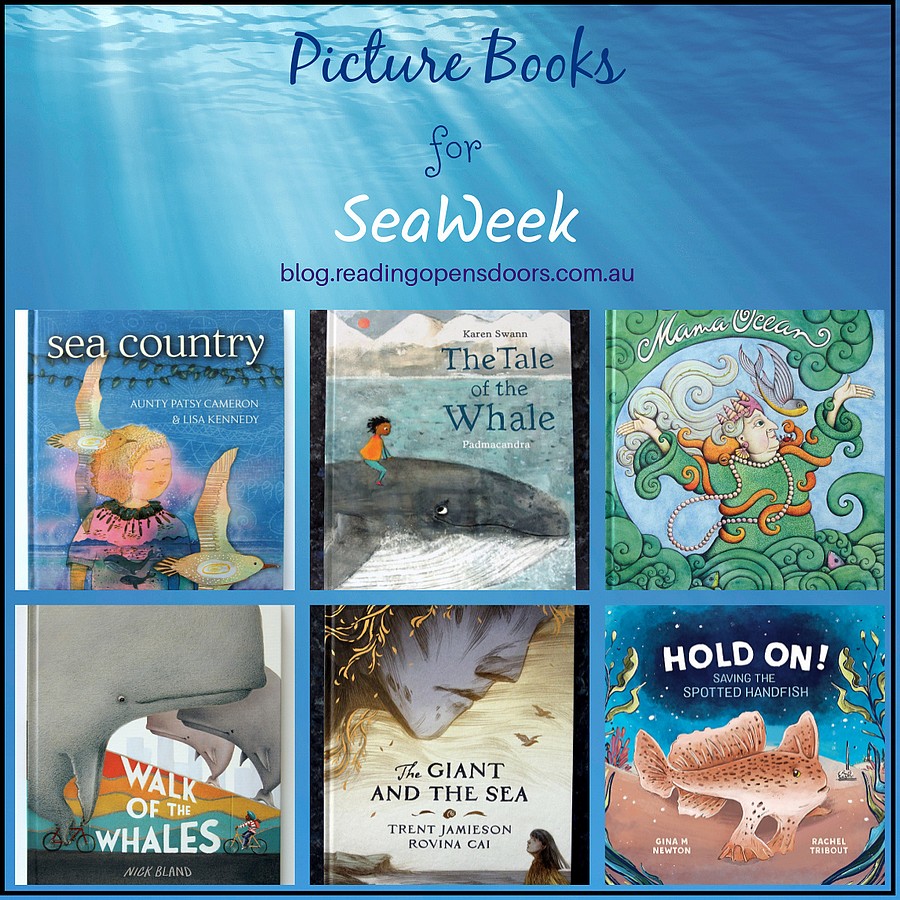
2022 SeaWeek from March 5 to March 13 is an opportunity to educate, inform and foster an appreciation for the sea and the theme this year is Our SEArch – what will you discover?
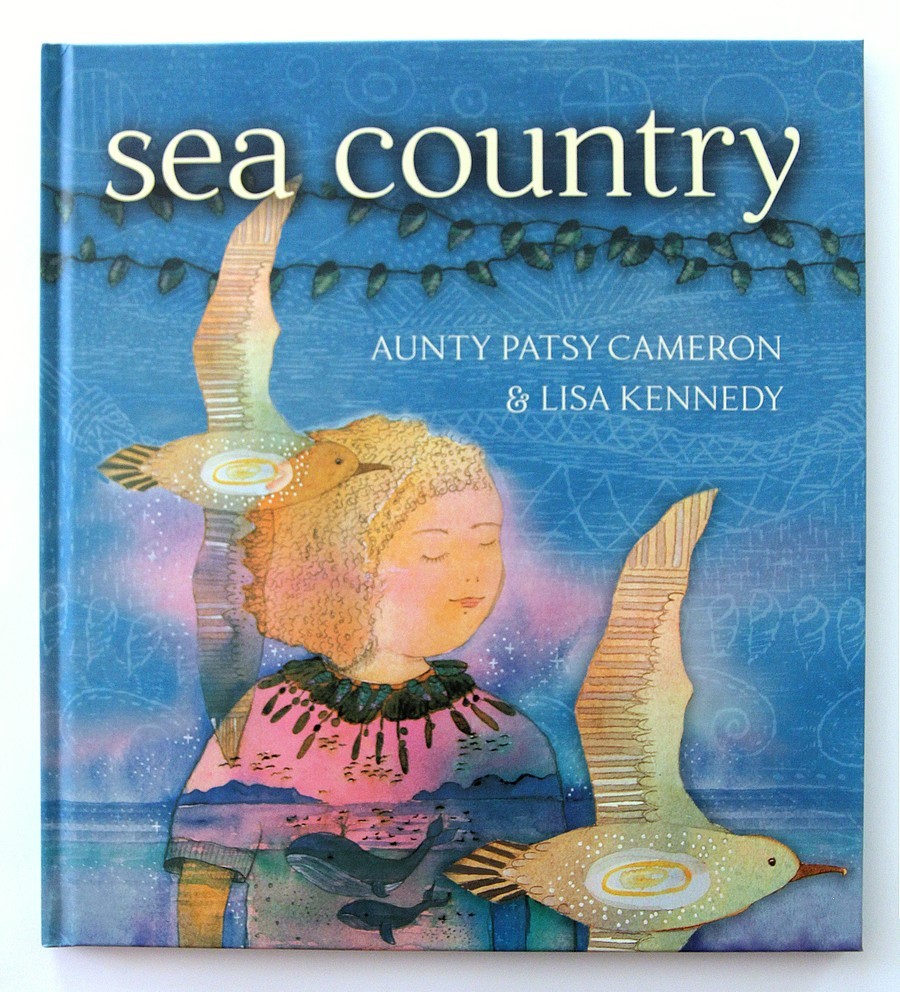
Sea Country by Aunty Patsy Cameron, illustrated by Lisa Kennedy and published by Magabala Books transports the reader back to Aunty Patsy Cameron’s childhood on Flinders Island in eastern Bass Strait. Her carefree days were spent playing on the beautiful beach teeming with fish and searching for treasure in the form of shells; playing with her sister and cousins in glorious caves as well as in the bush, all while discovering and learning about Country from her family and connecting deeply to it. Aunty Patsy’s people are descendants of Mannalaargenna of the Pairrebeenne/Trawlwoolway clan.
When Aunty Patsy was a child she was taught by her Aunties, Uncles, Grandfather and family about Country. Aunty Patsy learnt about foods to eat and she was involved in the seasonal collection of berries and fruits, including wild cherries, tatas and canyon fruits (each of these are beautifully illustrated). She was taught to watch for signs from Country and how to interpret what Country was telling them about weather and seasonal changes, for example, if there was a ring around the moon it was an indication that inclement weather was on its way. The migration of the mutton birds occurred at the same time as the boobyallah flowers erupting; these occurrences were observed and highly anticipated each year. Just as the boobyallah flowers bloom with the arrival of the mutton birds, the nautilus shells would appear with their departure. Aunty Patsy learnt about the many different types of fascinating shells as the women collected them and used these to create beautiful intricate necklaces. There were also certain shells that required specific knowledge to source and this knowledge was passed down from one generation to the next.
Sea Country is a stunning book brimming with vibrant colour, beauty and wonder. Lisa Kennedy’s stunning, evocative, layered illustrations often feature scientific details and the connection Aunty Patsy and her family experienced to Country and in some instances their ancestors. The nuance and intricate details in the mesmerising illustrations are breathtaking. This story is a celebration of the ways in which culture intertwined into the day to day life of Aunty Patsy and her people and how knowledge is passed from older family members to the younger generation. Aunty Patsy and Lisa Kennedy have a poignant shared dedication at the beginning of the book to their children’s children and this is at the heart of this story, passing on stories, the connection to Country and knowledge from the past to all children.
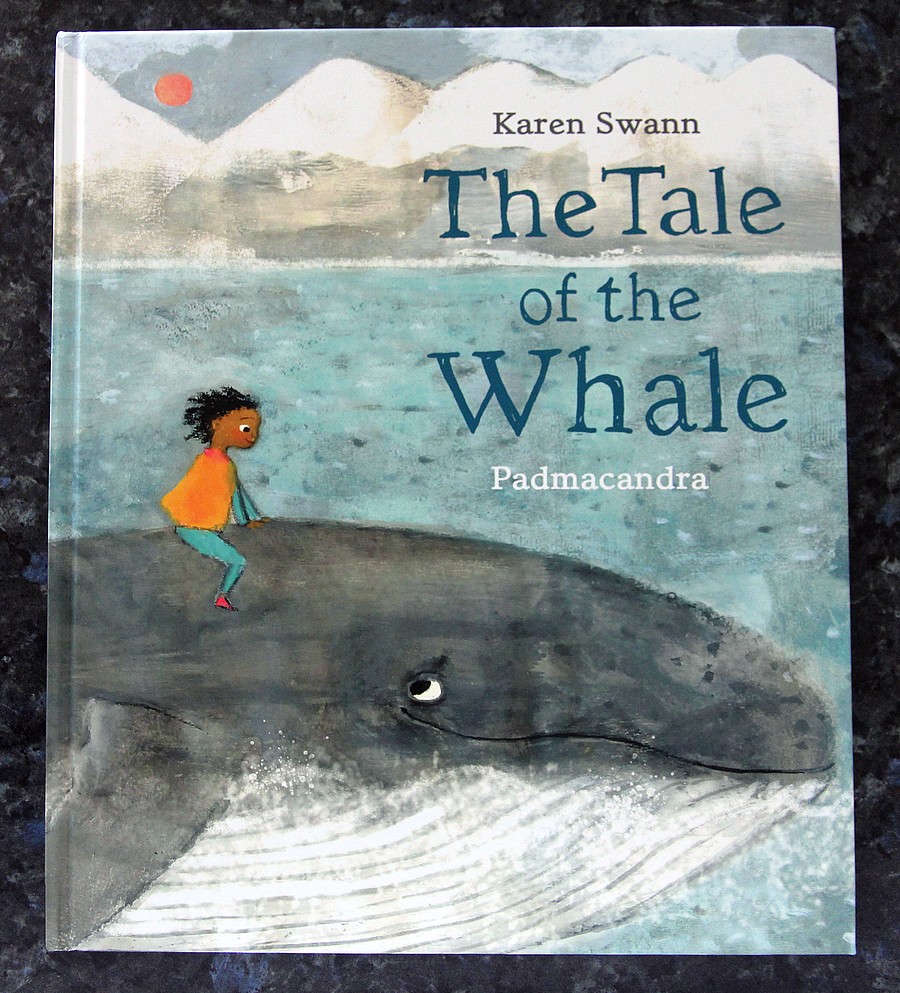
The Tale of the Whale is a stunning literary and visual masterpiece by Karen Swann, illustrated by Padmacandra and published by University of Queensland Press (UQP). Right from the moment the cover is opened the story begins on the endpapers. The title page is a visual treat as it is difficult not to be drawn to the illustration featuring a headland that resembles a whale in both colour and shape. This mesmerising, creative title page demands attention as it is filled with details that give clues about the setting of the story and highlights the different ways the local population interact with the ocean.
The gentle, lyrical narrative tells the story of a young child’s adventures with a whale and the beautiful connection they share as they explore the glorious depths of the ocean in all its colourful majesty. Their adventures are filled with awe as they behold the astonishing beauty to be found in the sea. Their travels result in the whale gaining a large appetite, so the whale opens its mouth and ingests “the soup of the ocean”, which is a stark contrast to the stunning vibrant colour and wonder that the child and whale had the privilege of experiencing together. Instead, this ocean soup is made up of the vulgar plastic waste that humans discard and ends up in the ocean.
The story highlights in a powerful and non-didactic way, the devastating impact the ocean soup has on the ocean life. The poetic, accessible narrative together with the multi-layered illustrations highlight the plight of several different animals, namely “a turtle in trouble, a gull in distress, a tightening collar, a shopping bag mess”. This plastic pollution awakens the child in the story to the effects of waste in the ocean and how it adversely affects the creatures who call the ocean their home. After being affected by these sights, the child is inspired and empowered to make a difference. The child, impassioned by their experiences, uses their voice to become an activist and encourage others in the community to change the situation. The child educates the community so the animals do not have a diet of plastic soup and the ocean can be a healthy environment for all animal and plant life that inhabit it.
This picture book is a stunning celebration of the sea. It portrays the wonder and awe to be found in the oceans. It explores how individuals have the power to make a difference to protect and improve the ocean environment for the animal and plant life that live there so that the utter beauty can be enjoyed by future generations.
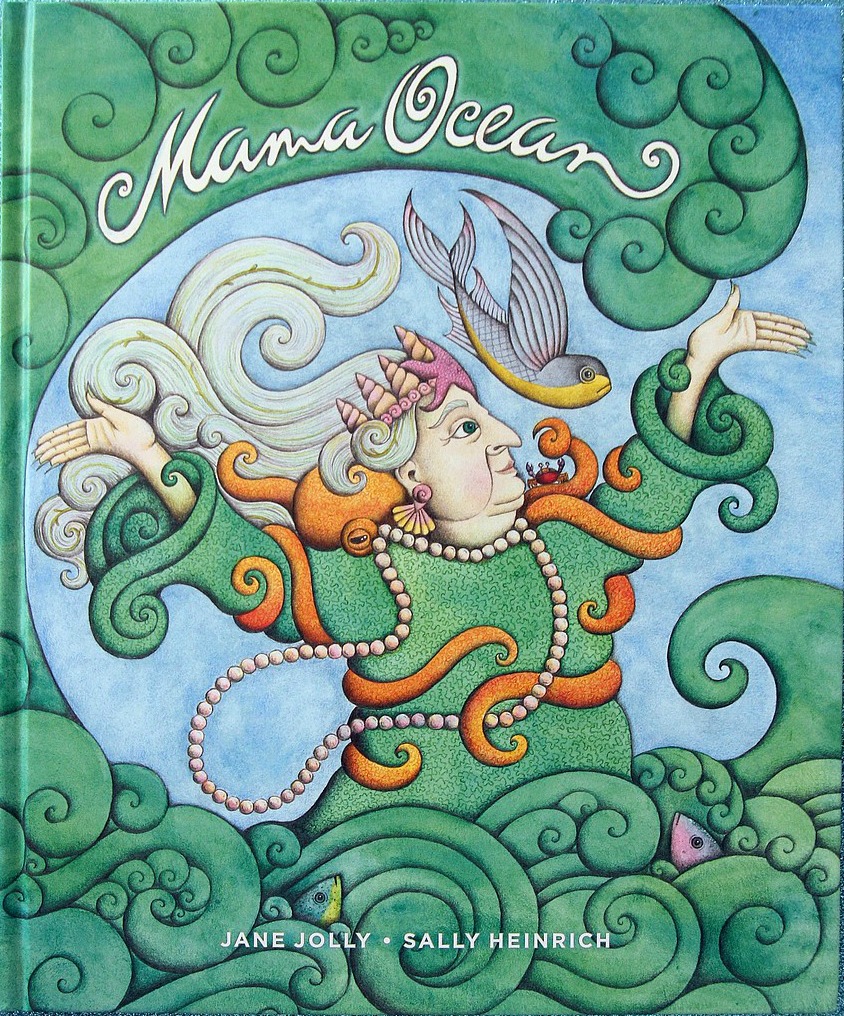
Mama Ocean by Jane Jolly, illustrated by Sally Heinrich and published by MidnightSun Publishing is a charming cautionary tale about protecting our oceans. This picture book will transport you to the depths of the ocean as you follow the wise and majestic Mama Ocean, whose health reflects the quality of the marine environment.
In this story, the strong and commanding Mama Ocean becomes sad and her concerned children (the sea creatures, of which there are many represented in this stunning story) attempt to lift her spirits by presenting her with attractive ‘gifts’ that they source from the ocean. Unfortunately, their resourcefulness does not seem to help Mama Ocean. Mama Ocean becomes increasingly unwell as “she was becoming bleached and frail. Her eyes were dulling”. The sea creatures are not aware of the damaging effects of the ‘gifts’ they find bobbing around in their home and how they are responsible for making Mama Ocean sick. After deep reflection and a desire to help Mama Ocean, the sea creatures come to the realisation that the gifts are dangerous and harmful to the ocean. They declare, “this finery is fake” and work together to rid the ocean of this toxic pollution.
This picture book contains rich lyrical text that swirls through the pages and complements the enchanting illustrations. The richness and movement of the ocean is captured in the illustrations with the repeated use of swirls. The detail in the illustrations on each page beckons the reader to revisit them and appreciate the many details.
The words and illustrations work beautifully in tandem to convey a powerful environmental message about the ways in which pollution adversely affects the ocean. This story will no doubt be a call to action to inspire young readers to adopt sustainable practices and environmental responsibility.

Walk of the Whales by esteemed book creator Nick Bland and published by Hardie Grant Children’s Publishing will inspire children to think about pollution in the ocean in a new and unexpected way and from the perspective of the whales. This highly entertaining and creative book tells the story about the whale population who took it upon themselves to suddenly leave their homes and walk out of the ocean to occupy the cities and towns. This brought much joy to the children, however this move had a polarising effect on adults as some people gained from this in the short term (like the fish seller who couldn’t keep up supply), while others were not at all impressed by the gigantic creatures wreaking havoc on their services and experiences.
As time passes the negative impact of the whales in the cities grows and frustrations mount as people’s quality of life deteriorates. The economy then suffers as businesses are forced to close and people have to find employment in new industries. Frustration turns to anger and people take to the streets to protest. The whales are vilified. Until one astute and courageous girl uses her voice to question the whales about their decision to live on the land. The whales’ response is powerful and in a non-didactic way contains an important environmental message.
Nick Bland’s humour shines in the gentle rhyming text as well as the gloriously detailed and expressive illustrations, which illuminate mostly double page spreads. The illustrations offer so much to explore and give further insight into the various impacts of the whales occupying the land.
This book lends itself to:
- Exploring an animal or plants perspective in relation to their feelings and thoughts about the ways humans impact their environment. Develop a creative response from this animal or plants point of view. Does your chosen animal leave their home like the whales? If so, where do they go and what is the result of this? Does your chosen animal or plant work together with the humans to educate them? What does this look, feel and sound like?
- Exploring visual literacy: There is so much to “read” and interpret in the illustrations. Consider the changing expressions of the whales throughout the story. Identify the different expressions and how do you account for these? What triggers the changes in their emotions? Consider the effects the whales have on the land (economic, environmental, social/recreational).
- Exploring the harmful and devastating impacts of pollution – consider short and long term consequences.
- Discussing examples of communities working together, adopting sustainable practices and collective environmental responsibility to ensure a clean, safe and welcoming environment for all, people and animals, so they can coexist harmoniously together.
- How anger can swell and lead to protests. Are you aware of any protests that have led to a positive change? What are the positive, negative and interesting points about a protest?
- Considering how one proactive person can make a difference and be a significant force for enormous change. What examples of this exist in your local area, state, country and on a global level?

The Giant and The Sea by Trent Jamieson, illustrated by Rovina Cai and published by Lothian Children’s Books is a stunning picture book about climate change and contains a story of hope, activism and taking a stand for what you believe in. It reinforces the idea that we are the caretakers of our precious earth and is a call to action. The lyrical text and beautiful illustrations are a work of art.
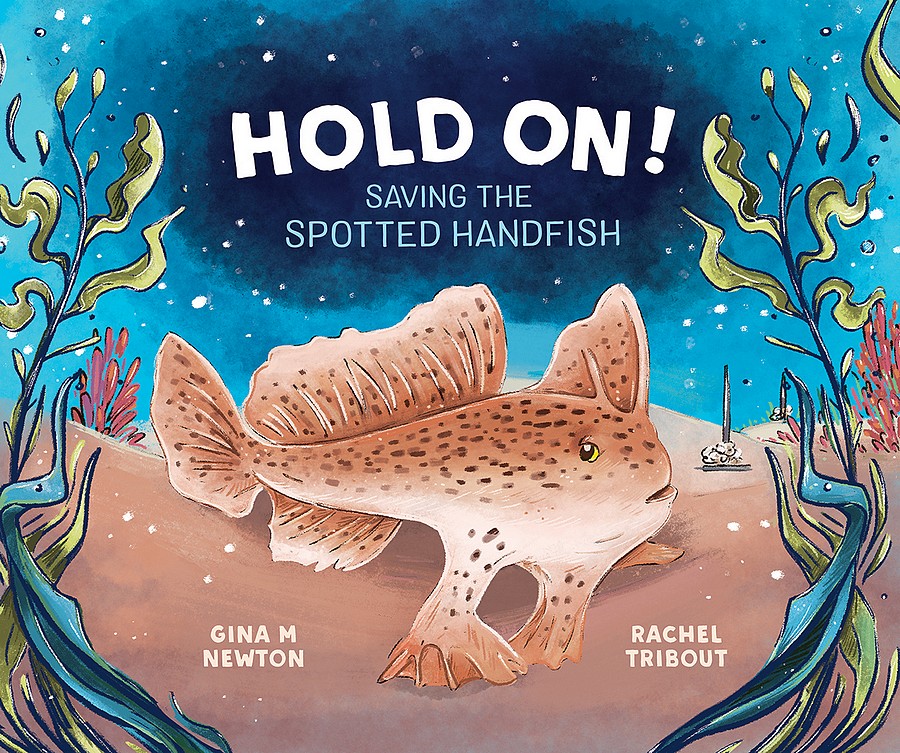
Hold On! Saving The Spotted Handfish by Gina Newton and Rachel Tribout is an engaging and fascinating picture book published by the CSIRO. This story is narrated by Handstand, a handfish and explores marine habitats, the life cycle of the handfish as well as the environmental threats to this fish and conservation. Many unique features are revealed about this fish that is millions of years old, some of these unique features make life for the handfish problematic and can increase the threats they face, compromising their chances of survival. The handfish is the first marine fish in the world to be listed on the International Union for Conservation of Nature Red List of Threatened Species. This book explores the IUCN Red List of Threatened Species and goes on to explore the role Scientists and technology has played in helping the Spotted Handfish. A fact file section and glossary are also included in this book. The words and illustrations work beautifully together to convey a powerful message about the ways in which human activities threaten this fish. This story will no doubt be a call to action to inspire young readers to adopt sustainable practices and environmental responsibility.
